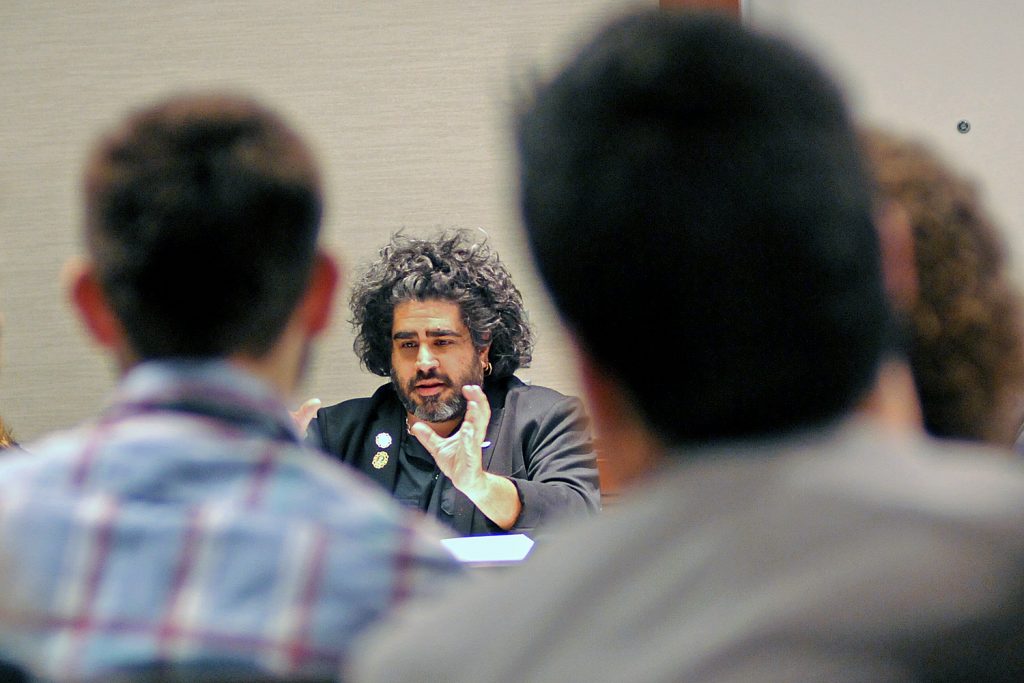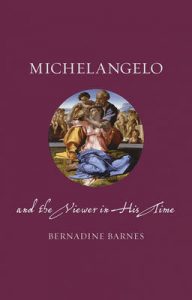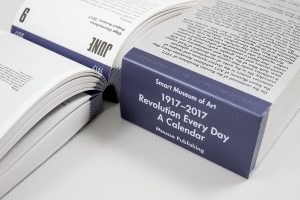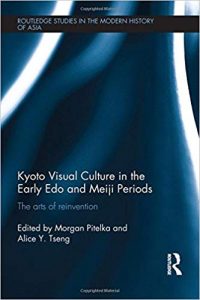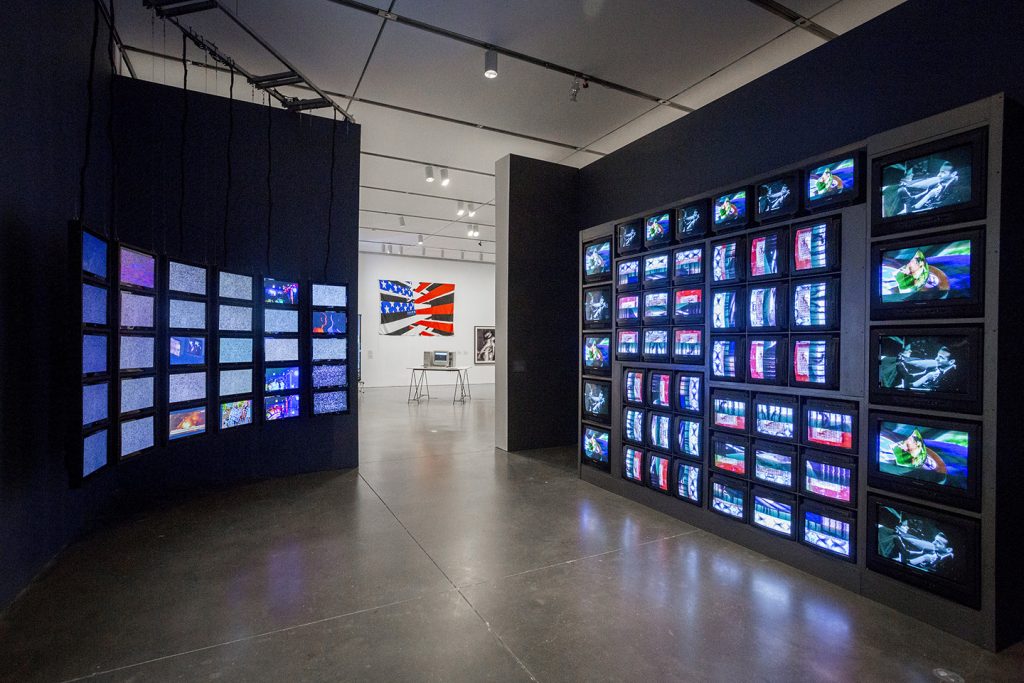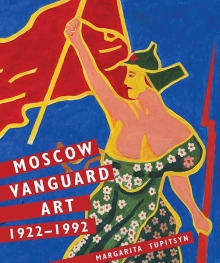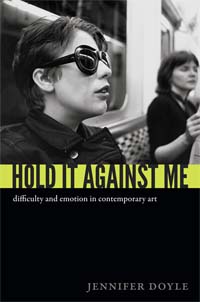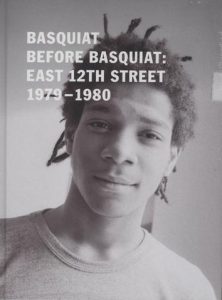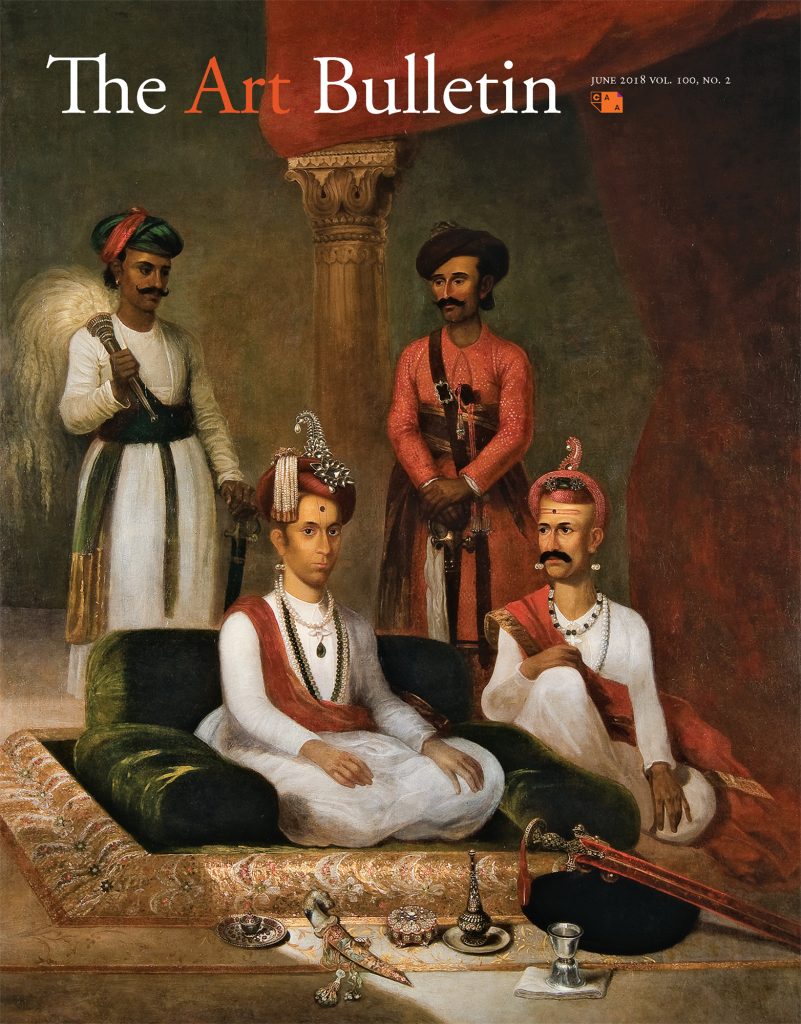CAA News Today
Submit a Proposal for a Professional Development Workshop at CAA 2019 – DEADLINE EXTENDED!
posted by CAA — August 06, 2018
The CAA 2019 Annual Conference will offer up to thirty 60-minute art-making and Professional Development Workshops, which will be free and open to the public.
This summer, we surveyed our members to determine what kinds of Professional Development Workshops would be most helpful. Members shared that there was the highest need for workshops on grant writing; finding grant funding and fellowship opportunities; pedagogy; diversity and inclusion; job searching and networking; publishing advice; online learning platforms and technology; financial planning, strategies and negotiation. Workshops related to exploring art making and design are also desired.
Twenty of these workshops are generously supported by the Emily Hall Tremaine Foundation and will be led by MFA students and/or entry-level, part-time faculty local to the 2019 Annual Conference in New York. Workshop leaders will receive a complimentary one-year CAA membership, a full Annual Conference registration for 2019, and a small stipend. (Please note that there may be only one leader for each Tremaine Foundation-supported workshop.) We have extended the deadline until September 14, 2018, for Tremaine workshop proposals. Click here to submit.
In addition to those funded by the Tremaine Foundation, CAA will offer additional Professional Development Workshops. Workshop leaders will receive a full Annual Conference registration for 2019 and a small stipend. (Please note that there may be only one leader for each workshop.) These workshop leaders do not need to be from the local New York area. The proposal deadline for these workshops closed August 31, 2018.
Proposals will be selected by the Annual Conference Committee.
While workshops will be scheduled concurrently with conference sessions, we will do our best not to schedule with overlapping content.
New in caa.reviews
posted by CAA — August 03, 2018
Nicoletta Rousseva writes about Revolution Every Day: A Calendar, edited by Robert Bird, Christina Kiaer, and Zachary Cahill. Read the full review at caa.reviews.
James P. Anno reviews Michelangelo and the Viewer in His Time by Bernadine Barnes. Read the full review at caa.reviews.
CWA Picks for August 2018
posted by CAA — August 02, 2018
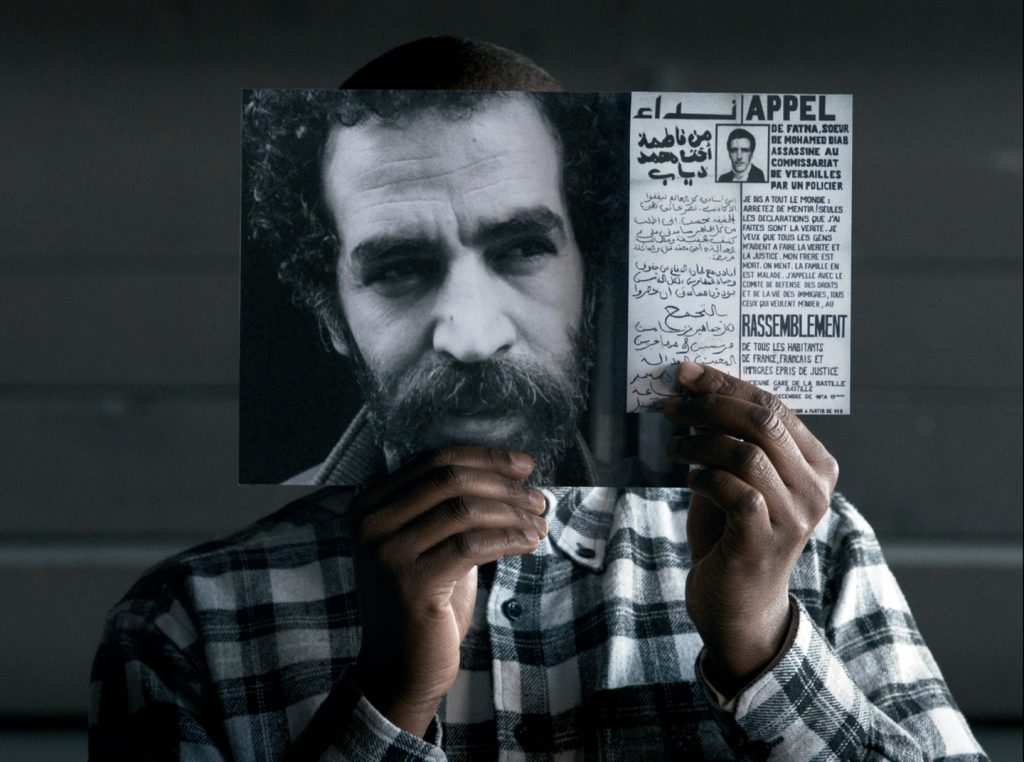
Bouchra Khalili, The Tempest Society, 2017. Video. © Bouchra Khalili / ADAGP, Paris, 2018. Courtesy Bouchra Khalili and Galerie Polaris, Paris.
CAA’s Committee on Women in the Arts selects the best in feminist art and scholarship to share with CAA members on a monthly basis. See the picks for August below.
Pussy, King of the Pirates
July 14–September 8, 2018
Maccarone Gallery
300 S. Mission Road
Los Angeles, CA
By now the summer gallery group show is a well-worn and fairly stale exhibitionary trope. Guest curators are brought in to align artworks from the gallery’s roster of artists alongside a few choice loans. Pussy, King of the Pirates is perhaps the most vibrant example of the summer group show—one that attempts to put politics into coordination with a summer holiday.
The show, which gets its moniker from the Kathy Acker novel of the same name, is a collection of twenty “non-male” artists. That distinction is important as not all the artists share in an embrace of “womanhood” (whatever that may be), but each interrogates feminism’s expansive boundaries from their own conceptual and material practices. Highlights include the sublime, small, dark Monica Majoli painting of an ex-girlfriend (Black Mirror (Judie), 2012) and Laura Schnitger’s spangled pantyhose processional totems. Eleanor Antin’s sculptural portraits are brilliant, evocative, and alive; while Alison Saar’s sculptures hold the stoic center of the installation.
This vacation, for all its noise, is a respite for the politically engaged—a life-giving show full of possibility.
Banu Cennetoğlu
June 29–August 26, 2018
Chisenhale Gallery
64 Chisenhale Road
London E3 5QZ
If you visited Kassel during documenta 14, you will remember the insightful warning “Being Safe is Scary” on the Fridericianum by the Istanbul-based artist Banu Cennetoğlu. The quote comes from the posthumously published diary of a female Kurdish fighter that was the subject of the artist’s other documenta—this one shown in Athens—that better captured her interest in collecting, classifying, archiving and the politics of memory and knowledge. Idiosyncratically summing up the major concerns of her practice, along with their underlying obsession with “speaking for the others,” as recently described by the artist, her current exhibition at the Chisenhale Gallery comprises Cennetoğlu’s first commission by a UK Institution in the form of a major two-fold solo exhibition.
For her commission, Cennetoğlu has produced a new moving-image installation consisting of the artist’s own archive of digital images and videos sourced from various devices, such as mobile phones, computers, cameras and external hard drives. The work presents a continuous stream of unedited content, ordered in a chronological format from 2006 to 2018, and lasting 128 hours and 22 minutes. It is presented as a different six hour-long file each time the gallery is open. Tracing over a decade of personal, social and political change from the banality of life’s inconspicuous and conspicuous moments to salient moments of recent history, it comprises an important archive of our times marked by linearity and circularity that captures both the intersection of self and history as well the changes in image production and circulation. In conjunction with her installation Cennetoğlu also facilitated the distribution of The List in The Guardian newspaper on June 20, 2018, World Refugee Day. Compiled each year by UNITED for Intercultural Action, The List traces information relating to the deaths of 34,361 refugees and migrants who have lost their lives within, or on the borders of Europe since 1993. Since 2007, in collaboration with art workers and institutions, Cennetoğlu has facilitated updated versions of The List using public spaces such as billboards, transport networks, and newspapers. As a whole the exhibition thus effectively shows the impossibility of a complete separation of one’s own life from that of the other’s, and this drives Cennetoglu’s artistic explorations and its politics.
Huma Bhabha: We Come in Peace
April 17–October 28, 2018
Metropolitan Museum of Art
1000 Fifth Avenue
New York, NY
On the roof of the Metropolitan Museum of Art two monumental figures face off. One, a janus-faced twelve-foot-tall alien, and the other, one of the artist’s signature Benaam—a prostrate, crumpled figure which she often uses to stand in for the nameless dead in the Iraq and Afghanistan wars. Although the works look like they’re made from plastic, Styrofoam, and earth, they are cast in bronze to withstand the elements.
Other artists have approached the Met’s rooftop with bombastic aplomb, topping its paving stones with flashy trinkets (Jeff Koons) or complex structures (Doug and Mike Starn). Bhabha is spare, restrained, and as a result leaves the space—which otherwise serves as a picturesque lookout onto Central Park—charged with the lingering inhumanity of the United States’s protracted international incursions.
Walking around and between the figures one feels caught in a crossfire—between recognition and strangeness, life and death, possibility, and certitude.
Laure Prouvost: Ring, Sing and Drink for Trespassing
June 22–September 9, 2018
Palais de Tokyo
13, avenue du Président Wilson
Paris
The French, and now Antwerp-based, winner of the 2013 Turner Prize, Laure Prouvost has continued to do what she was originally distinguished for: the awesome, often seductive, complexity with which she enjoins objects, multimedia images, and sound with language, in surreal combinations of life- and art-inspired story telling, often directly addressing the viewer. Prouvost’s work adopts the form of independent stories where action mixes with reality in immersive installations that invite escapism through an evocative combination of films, sculptures, paintings, tapestries, and performances. Imaginative, sensuous and full of humor, her work examines the relationships between language, image and perception, trapping the visitors in situations of pleasure, doubt and incomprehension evincing a delectably intense—both intellectual and multisensorial—wonder underpinned from a radically feminine excess.
For this typically exuberant return home, her first solo show in a Parisian institution, Prouvost responds to global warming and transforms Palais de Tokyo into a space where nature is purported to have taken over from humanity. Inviting both intimate and expansive exploration and a polyvalent meeting of paradise and wasteland, the exhibition begins through a curved corridor covered in woven tapestries that lures the viewer into an unknown territory. This eventually evolves into a metallic network of manufactured objects, interwoven with branches, car mirrors, her signature raspberries, collages, newspaper clips as well as vases in the shapes of bottoms. Flowers indicate that nature has annexed the building’s architecture and the outside world has broken in. At the center of the exhibition, a large fountain of breasts is waiting to feed the viewer, a respite where one can reflect after discovering the atypical panoramas conceived by the artist. There, a new video reflexively incorporates some of the physical elements present in the exhibition, complementing the multifaceted confounding that the rest of her works achieve, and inviting the viewer to question her/his preconceptions of the world at large.
Bouchra Khalili: Blackboard
June 5–September 23, 2018
Jeu de Paume
1, place de la Concorde
75008 Paris
Bringing a large selection of her work from the past ten years, this extensive survey introduces the radically experimental multimedia and documentary practice of French-Moroccan artist Bouchra Khalili (born in Casablanca, 1975 and now living in Berlin). Khalili is known for films, video installations, photographs and silkscreens that enable members of minorities to perform strategies of resistance against power, while systematically seeking for a new collective voice by articulating subjectivity and collective history.
The exhibition premiers Twenty-Two Hours, a new film that investigates Jean Genet’s commitment to the Black Panther Party, reflecting on the essential connection between poetry and collective emancipation, as well as The Tempest Society a work produced for documenta 14 in Athens, illuminating the artist’s long term reflection on radical equality and art as a civic platform. It also brings together older works that capture a variety of central topics underpinning her critical exploration of past and present, marked by all kinds of borders and their crossing, a critique of history and the present condition of civic society and the rescuing of all kinds of silenced voices. Among them stands out her look at globalized trade from the perspective of migrant laborers (The Seaman, 2012); displacement and forced journeys whether in the Mediterranean (The Mapping Journey Project, 2008-2011 and the “Constellation” series, 2011) or from the Caribbean to the US (as in the photographic series “Wet Feet,” 2012), as well as different modes of belonging (the
“Speeches”, 2012-3), and in the multimedia installation Foreign Office, 2015, unexpected contexts of liberation movements, such as Algiers.
Pia Camil: Telón de Boca
August 11, 2018–
Museo Universitario del Chopo
Dr. Enrique González Martínez no. 10
Mexico City, Mexico
For years now Mexican artist Pia Camil has employed used t-shirts as a primary material in her practice—elegantly tying together nostalgia, global capital, and architectural intervention. For her installation at the Dallas Museum of Contemporary Art (Bara Bara Bara, 2017) the shirts were sewn together into large quilts and floated from the museum’s cavernous ceiling Viewers could poke their heads through these colorful “clouds,” effectively separating their heads from their bodies, and becoming the inhabitants of a surreal topography.
In this installation Camil has sewn together hundreds of black concert t-shirts, obtained through a sequence of events at the museum and the nearby tianguis. Markets, formal and informal, thus structure the creation and display of the piece—as value is exchanged both through the activity of trade and the transformation of the humble t-shirt into a large-scale work of art. That the t-shirts “speak” their own message (the “mouth” of the exhibition’s title) is a necessary complication to the artist’s gesture. In this way the work exists somewhere, as per the exhibition’s press release, between “the fetish, the ritual, and the everyday.”
2018 Professional Development Fellowships for Graduate Students Now Open
posted by CAA — August 01, 2018
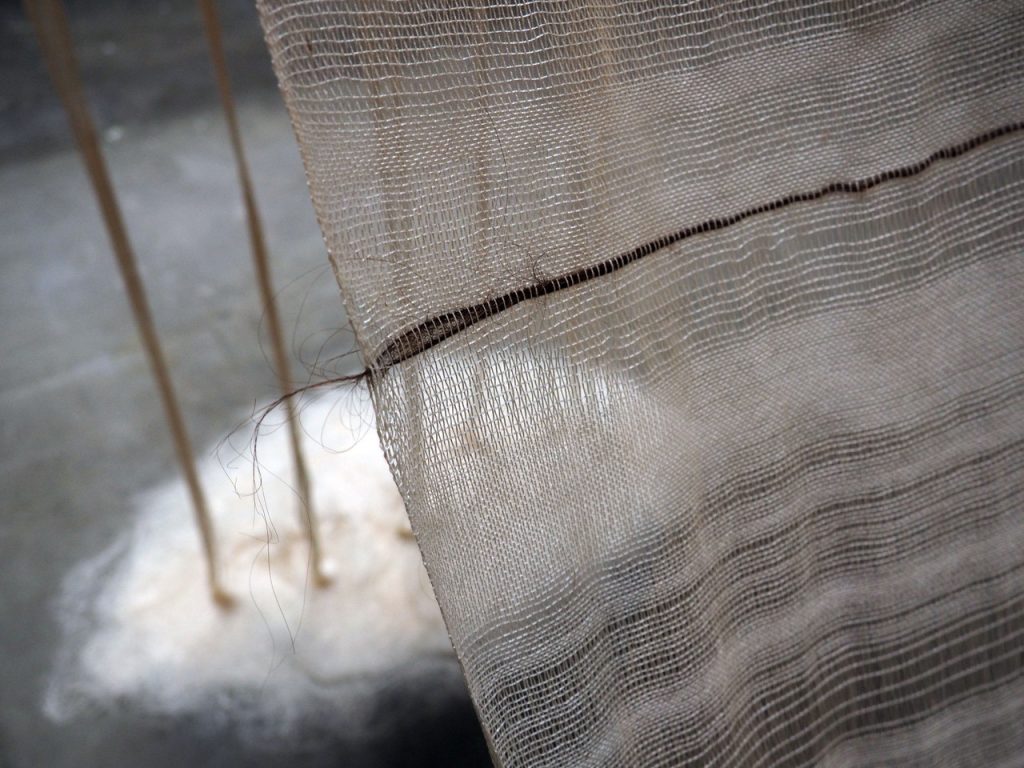
Brenna K. Murphy, Grief Work (Shroud). Detail. Cotton yarn and artist’s hair, 100 ft x 40 in. 2017 Professional Development Fellow in Visual Art.
The Professional Development Fellowships program supports promising artists, designers, craftspersons, historians, curators, and critics who are enrolled in MFA, PhD, and other terminal degree programs. Fellows are honored with $10,000 unrestricted grants to help them with various aspects of their work.
One award will be presented to a practitioner—an artist, designer, and/or craftsperson—and one award will be presented to an art, architecture, and/or design historian, curator, or critic. Fellows also receive a free, one-year CAA membership and complimentary registration to the Annual Conference. Honorable mentions, given at the discretion of the jury, also earn a free one-year CAA membership and complimentary conference registration.
CAA initiated its fellowship program in 1993 to help student artists and art historians bridge the gap between their graduate studies and professional careers. Past recipients include artists and thinkers such as Marin Sarve-Tarr (2015), Maggie Cao (2014), La Toya Ruby Frasier (2006), Risë Wilson (2002), Chitra Ganesh (2001), Miguel Luciano (2000), Miwon Kwon (1996), and Blake Stimson (1995), among many others.
ARE YOU ELIGIBLE?
CAA seeks applications from students who are current members; will receive their MFA or PhD degree in the calendar year 2019, following the year of application (2018 for the current fellowship cycle); and have outstanding capabilities and demonstrate distinction in their contribution to art history and the visual arts.
A jury of artists, curators, and other professionals will review all applications in fall 2018 and announce the recipients in January 2019.
HOW TO APPLY
DEADLINES
PhD Fellowship: October 1, 2018
MFA Fellowship: November 16, 2018
CONTACT
For more information about the CAA fellowship program, please contact Aakash Suchak, grants and special programs manager, at asuchak@collegeart.org.
News from the Art and Academic Worlds
posted by CAA — August 01, 2018
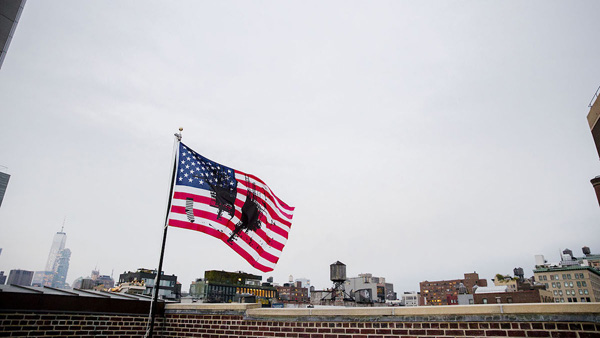
Josephine Meckseper, Untitled (Flag 2), 2017. Photo by Guillaume Ziccarelli. Courtesy of Creative Time via Artsy.
The Rise of Artistic Censorship on College Campuses Should Worry the American Public
Sarah McLaughlin from Foundation for Individual Rights in Education (FIRE) writes on the recent controversy surrounding artist Josephine Meckseper’s artwork at University of Kansas, and the trend of censorship on college campuses at large. (Artsy)
‘The Reaction Has Been Overwhelming’: Susan Unterberg Comes Forward as a Major Anonymous Patron of Female Artists
Since 1996 the Anonymous Was a Woman award has provided $5.5 million in grants to female artists aged over 40. (artnet News)
Archiving While Black
“In more than one instance, I have looked up from my research to see paintings of white men famous for committing heinous acts against indigenous communities, or racist artifacts displayed proudly as if devoid of the context in which they were produced.” (Chronicle of Higher Ed)
Debt-Ridden Students Claim For-Profit Art Institutes Defrauded Them With Predatory Lending Practices
As the Art Institutes closes 18 campuses, students claim to have been defrauded by high tuition costs, interest rates, and few career prospects. (artnet News)
In Rihanna Photoshoot for Vogue Paris, Juergen Teller Cribs Imagery from Mickalene Thomas
The two artists are both represented by Lehmann Maupin and listed side-by-side on the gallery’s website. (Hyperallergic)
Visiting the Museum: Learning Resources
Helpful tools to help students think more critically about art museums and their relation to the study and practice of art history. (Art History Teaching Resources)
New in caa.reviews
posted by CAA — July 27, 2018
Mark Erdmann writes about Kyoto Visual Culture in the Early Edo and Meiji Periods: The Arts of Reinvention edited by Morgan Pitelka and Alice Y. Tseng. Read the full review at caa.reviews.
Valeria Federici reviews Art in the Age of the Internet, 1989 to Today edited by Eva Respini. Read the full review at caa.reviews.
News from the Art and Academic Worlds
posted by CAA — July 25, 2018
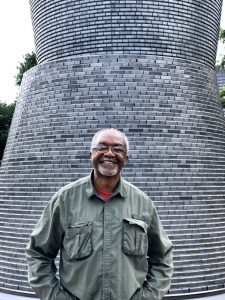
Kerry James Marshall with A Monumental Journey. Photo courtesy of the Greater Des Moines Public Art Foundation, via artnet News.
The House Overwhelmingly Rejects a Republican Proposal to Slash Funding for the NEA and NEH
A last-minute amendment to cut each agency’s funding by 15% was soundly defeated last week. (artnet News)
Why Are Some Colleges and Universities Dropping the SAT/ACT?
The University of Chicago announced that it will no longer require SAT or ACT scores from its undergraduate applicants, beginning in 2023. (MLA Action Network)
It Was a Monumental Journey’: Kerry James Marshall Unveils a Memorial to the Country’s Groundbreaking Black Lawyers
The monument in Des Moines, Iowa, took 12 years to bring to fruition. (artnet News)
Chicano Artists Challenge How We Remember the Alamo
The Other Side of the Alamo: Art Against the Myth is on view through October at the Guadalupe Cultural Arts Center in San Antonio. (Artsy)
MoMA’s Union Employees Have Been Working Without a Contract for Nearly Two Months—and Negotiations Have Stalled
Union members are concerned about wage increases, medical costs, job security, and the increasing demands of executing the museum’s expansion. (artnet News)
How to Make Time for Research and Writing
Twelve scholars share their tips for getting it done. (Chronicle of Higher Education)
CAA Member Spotlight: Ryan Seslow
posted by CAA — July 20, 2018
Welcome to our revitalized Member News! In this ongoing series we’ll be spotlighting CAA members and learning about their work, inspirations, and thoughts on the field.
Are you interested in being featured in Member News? Let us know at: caanews@collegeart.org
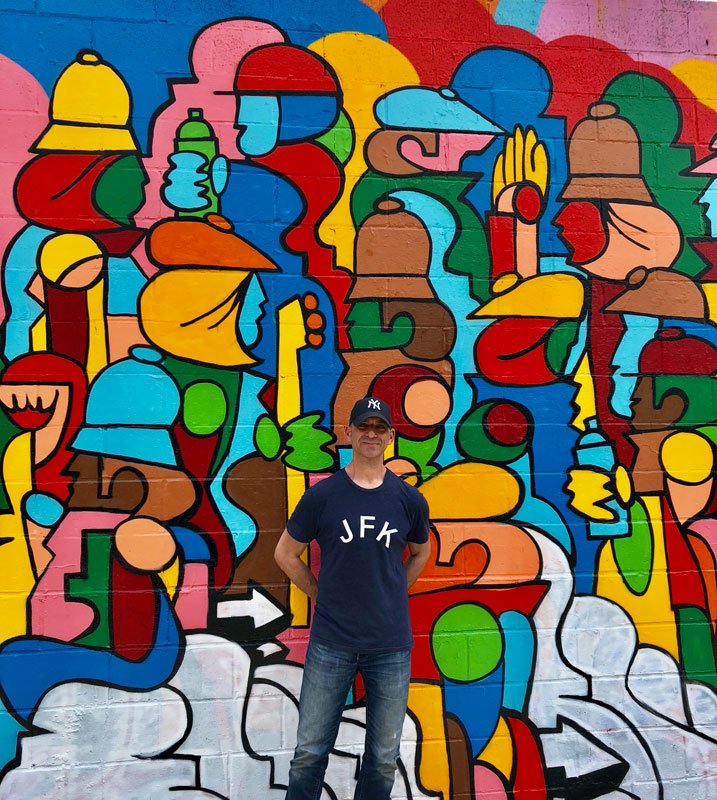
Ryan Seslow with his new mural at the Welling Court Mural Project in Astoria, NY, June 2018. All images and artwork courtesy Ryan Seslow.
CAA member Ryan Seslow is an artist, graphic designer, web designer, illustrator, and a professor of art and design living and working in New York. As a visual artist he works with a synthesis of applied arts, new media, digital and internet art, and as a professor of art and design he’s been teaching various hybrid studio art, digital art, graphic design, digital storytelling, communication technology, and web design courses for graduate and undergraduate level programs between CUNY York College, CUNY BMCC, LIU Post, and Iona College since 2004.
CAA media and content manager Joelle Te Paske corresponded recently with Ryan via email to learn more about what he’s thinking about and working on.
Joelle Te Paske: Thanks so much for taking the time to chat with me. So first things first – where are you from?
Ryan Seslow: I’m from New York, born and raised. My family migrated from Manhattan to Brooklyn and Queens, then to Long Island. My family owned a business and lived in Williamsburg for many years, then moved to Canarsie. I spent most of my childhood there and then worked for the family business for many years before college and grad school.
JTP: You’re an artist, a designer, and a professor. What drew you to the work you do?
RS: I have always been an artist. I knew it by the time I was 3 years of age because I loved to draw. I could do it for hours all by myself. By the time I was 5 years of age I was making friends in school by drawing cartoon portraits of them, it made everyone laugh. I’m also Deaf and hard of hearing, so having a visual language was the overcompensation for not hearing. I loved to learn but it was at first out of visual necessity. This became an unconventional practice and the discovery of the interconnections of all things creative. This is the short answer of course, but I have always believed in the creative human potential and how we have a responsibility to express and share it.
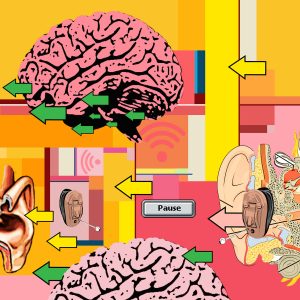 JTP: When did you first become a CAA member?
JTP: When did you first become a CAA member?
RS: CAA was always mentioned and shared by colleagues. I started teaching in 2002 as a graduate assistant in my MFA program so CAA was the go-to resource for finding information on jobs and what teaching artists were doing in the field both after their MFA studies and professionally. I joined in 2002 as a graduate student and then became a member on and off over many years now. I’m guilty of letting memberships lapse in-between but CAA has always been there to welcome me back!
I always wanted to know what other people like myself in the field were doing, how they were doing it, and why? I like to watch things from afar for a while, to understand them and experience them in my own way. This is my learning process. This always leads to ideas on how I can contribute to a larger whole. Sometimes its strangely immediate but it’s usually over time.
JTP: Have you attended CAA conferences?
RS: I haven’t, shame on me! Although I do follow the event, especially since so much of it is accessible online. Many of my teaching colleagues have attended and given presentations over the years in the various cities it takes place. I have always had the vicarious experience of hearing their stories and reading the reflection blog posts. Social media certainly helps this even more now. Perhaps 2019 is my year! Perhaps its time to create a presentation to share my last 14 1/2 years of teaching art and design at the college level from the perspective of a Deaf and Hard of Hearing professor.
JTP: What do you appreciate about being a CAA member? Where would you like to see CAA improve?
RS: I appreciate CAA’s website and the resources that are available there. I appreciate the art journals and other publications, plus the updates that CAA is currently making. I feel that I can reach out to you guys and know that I will get a response, support, and guidance. That’s huge, and I am very grateful for that.
CAA can easily expand upon their presence by collaborating with members in various capacities. I would love to curate an online exhibition on CAA’s website of art history remix GIFs. Or a “pass the buck” internet art collaboration that allows members to contribute and participate and also incorporate their students into the project. Transparency and equality, let’s emphasize this more through community. Art education and the college art education platform is in tremendous flux right now. CAA is in a great position to be a bridge between the institutions, teaching artists and professors, students and the communities they serve, and beyond.
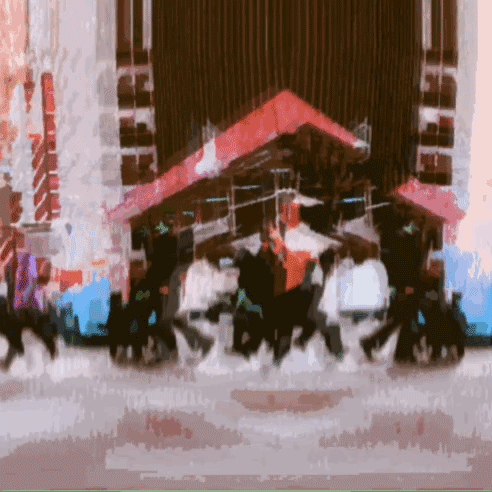
JTP: What’s exciting to you right now in academia?
RS: What excites me most in academia right now is the students, first and foremost and always the students. I love my students and I love re-emphasizing why I am a teaching artist at the college level. I’m there to help create a learning platform both inside and outside of the classroom—instilling skill sets that can be learned, displayed, and applied into the non-static world (meaning NOW, not just when they graduate). This includes public collaborative projects between my campuses and regular use of websites and the internet for dialogue, exhibition, and posterity. The internet and mobile applications make it easy to constantly be an example and share use-value-based content.
I’m excited to see how teaching artists are stepping up to the challenges of a changing academic world. Less and less full-time positions are being created and less people are majoring in various art and design programs. How does this effect both full-time professors and adjuncts? What will this lead to? I’m noticing things—many more integrated and experimental special topics courses are being created to test for interest and collaboration. Companies are partnering with colleges and universities to see “how” they can work together. Good or bad, we shall see, but either way it is a continued time of learning and taking responsibility for solving problems. This forces us to make assessments about how to respond. It is our responsibility to be of service regardless of what gets cut.
JTP: What’s not so exciting in academia?
What is not so exciting, well—the chronic complaining about how things used to be in academia. People need to move on. Chronically complaining about the past and what once was is a waste of energy. The past is the past, nothing is ever static, everything changes—art, artists, art movements, art departments and higher learning institutions. We are always in a state of change and we need to remind each other of this. It is so much easier to operate from the past because it is familiar, but we don’t grow that way.
We need to put more emphasis on the imagination and create potential to generate new solutions. We are always in a position to seek and create new solutions through collaboration and community building. This can also be created outside a single institution. Why not form new relationships and collaboratively solve problems with institutions in other countries, for instance? There is much to learn from contrast. Whether it be social, political, environmental, emotional, or psychological. We need to include and consider others in everything we do.
JTP: I love that you mention the importance of empathy and compassion for the future of education on your website. Can you speak more about that?
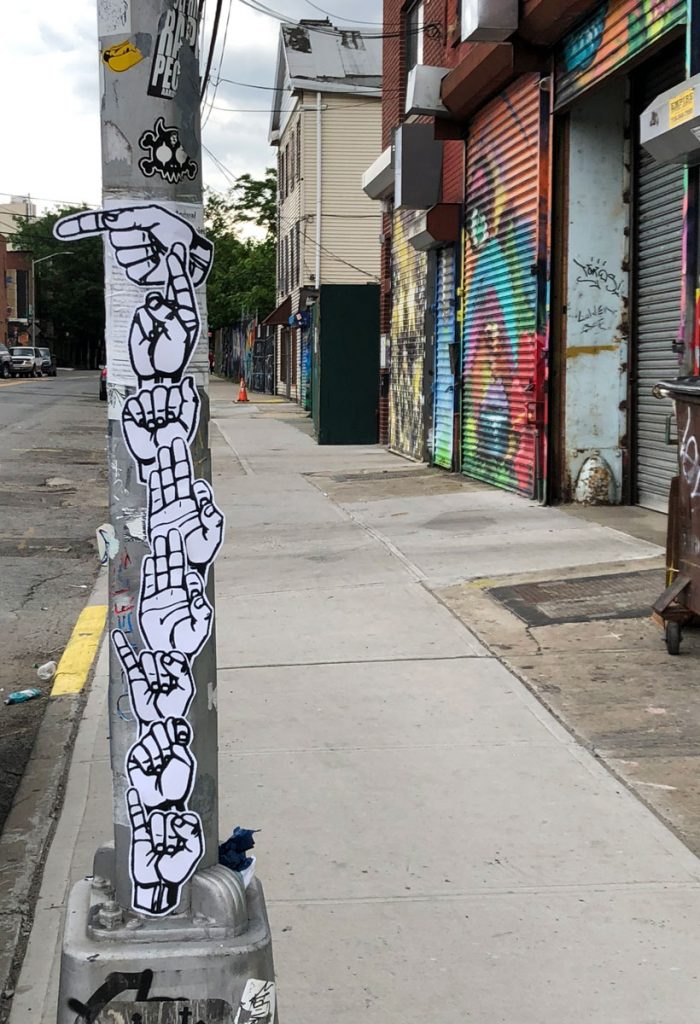
RS: I would be happy to! As I mentioned above, what excites me the most about teaching in higher education (and being a teaching artist in general) is the students. I love people. I’m interested in the psychology of learning and how that simulates itself through art, creativity, and design in a group practice.
Before any new class begins I have the highest level of respect that each student is first and foremost a beautiful human being. Professors are not better or higher than their students. We were all undergraduate students at one point. When I was in undergraduate college, I struggled as a Deaf and Hard of Hearing person attending an all-hearing university. I was afraid to ask my professors to speak louder or more slowly or clearly. Sadly, many of them were standoffish and strict with outdated rules from the 1940s (I was in college in the early 1990s). There was a lack of approachability and human rapport that I later used as the contrast—that was who I would never be. Of course, this was not all of my professors, but there were quite a few.
I set the entire tone and rapport of the 15-week semesters in the first class by meeting my students and learning about each other. The classes are not about me. Before I say one word about the course content and subject, the class meets each other as human beings, they share snippets of their lives, interests, and why they are taking the course. We talk about life, creativity, the imagination’s potential, and how to create a classroom dynamic where we are all collaborators of a whole. This has never once failed and continues to help me learn so much about myself, and the infinite number of ways that others see and experience the world.
In order to be effective teachers we must become masters of communication. This means we must master the art of listening. It’s not simply “hearing” what someone is saying, but learning how to be attuned and aware that listening goes far beyond the functions of the ears. It means being fully present with out the distractions of one’s ego making judgments and counteracting what is being said by the person speaking or communicating. As a Deaf and Hard of Hearing person working mainly in hearing persons environments it has been a very long road for me to learn how to communicate in various ways. The hearing world can learn a lot from the Deaf and Hard of Hearing community on this. I’m currently working on ways to share more about this with my colleagues, students and administrators.
JTP: That’s terrific, thank you. Could you share some of the projects you’re working on now?
RS: Ah, many, many things, here are a few:
1. I have an online exhibition running right now. I created this specifically for my website to show the potential of creating works for the internet first – then see how they can transcend into otherness. (Otherness meaning a non-commissioned public space a gallery or a museum.) I’m doing this because the internet is incredibly accessible, versatile and has so much potential for sharing of art.
This exhibition is titled: Communicating My Deaf & Hard of Hearing Self – Part 1

All of the pieces have been created in 2018 and consist of digital illustrations, collage, animated GIFs, video art, and written words. Fragments of manipulated grainy images and re-compositions display the variation and extension of each piece. The works are visual representations for the regular distortions, missing of sounds, words, and overall communication I experience daily. They represent how I feel, react, overcompensate, and adjust to communication in various interactions. They are intended to be both subtle, confusing and difficult to follow. Communicating My Deaf & Hard of Hearing Self – Part 1 is the first installation in the series. It is first published here on my website and shared via my social media platforms. I am seeking to extend this body of work into a lecture series for both the Deaf, Hard of Hearing and the Hearing world.
2. One of my favorite pedagogical models is a class blog. I see a lot of power and potential in it. I teach between two CUNY colleges here in New York and just submitted a wonderful cross-campus class collaboration to the New York Public Library’s zine collection. The students applied their new skill sets by interacting with each other using a class blog via the CUNY Academic Commons (where I’m a sub-committee member). You can view the entire project here.
3. I’m the curator and juror of the Art of the Hills exhibition currently on view at the Berkshire Museum in Pittsfield, MA. You can read my essay on the project here and via the Museum’s website.
4. I have a new mural at the Welling Court Mural Project in Astoria, NY. The image attached to this interview is of me and my completed mural from this past June, 2018. You can read more here.
JTP: What would you like to see more of in the field regarding resources for Deaf and Hard of Hearing professors?
RS: I would very much like CAA’s help. We could create a network and resource for connecting with more Deaf and H of H teaching artists and professors. It would be great to initiate this via this interview and build off of it.
Are you a teaching artist and/or professor who identifies as Deaf or Hard of Hearing? Let us know.
JTP: Who is your favorite artist or designer? Favorite exhibition?
RS: Ah, the hardest of all questions! I’m constantly redefining and integrating new and old favorites across all levels of influence and inspiration. I tend to like various things and discover so much retroactively through continuous research.
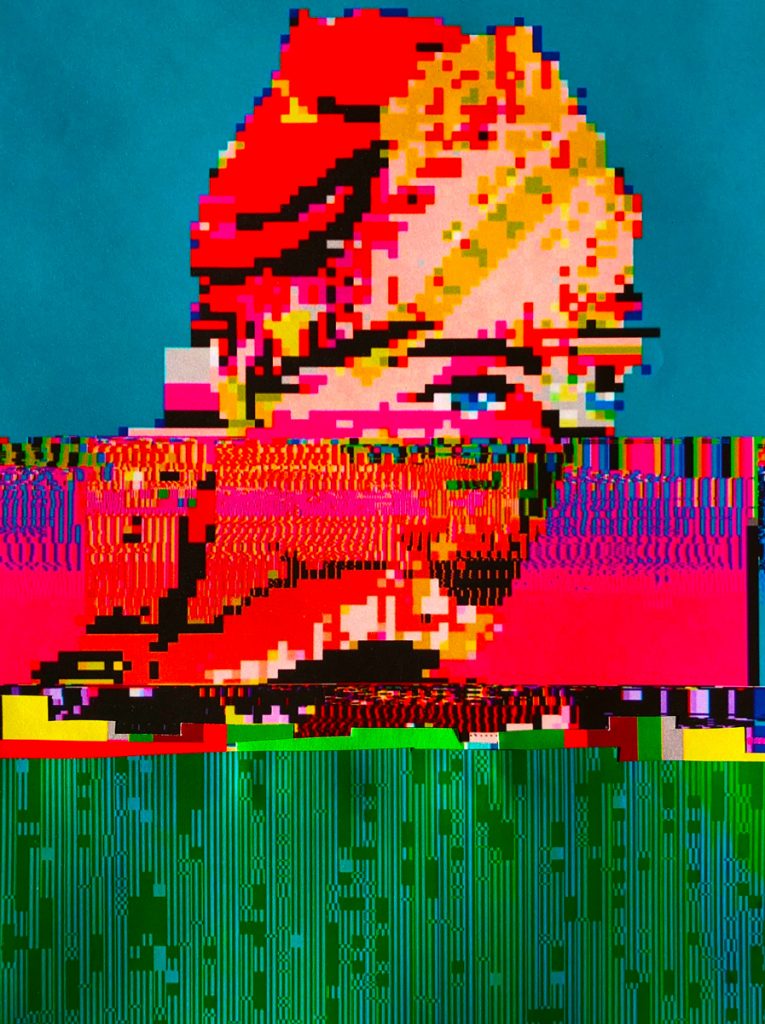
My longest running artistic influence is by far the 1980s New York City subway graffiti movement and many of the artists that pioneered it. Artists like Doze Green, Dondi White, Futura, Lady Pink, John Fekner, and Lee Quinnones are just a few to name. I got into writing graffiti in 1984 and it always stayed with me. I share the history of graffiti in every course I teach.
There is context and influence to be shared across all art and design disciplines. I also love the work of Takashi Murakami, Kara Walker, Cai Guo-Qiang, Yayoi Kusama and Matthew Barney (to name a few). Matthew Barney’s retrospective at the Guggenheim Museum in 2003 was, and still is, one of my favorite exhibitions of all time. I say this because not only did I love the variety of interconnected works in film, photography, sculpture, drawing, and installation, but the museum space itself was incredibly important and complementary to the entire exhibition. I saw the show 8 times in total.
I’m a big Paul Rand fan in the design world, as well as Joshua Davis and Debbie Millman (and her podcast Design Matters).
One of my favorite books is called Viral Art written by the multi-talented author, curator, and critic RJ Rushmore. You can download or read this book online. It’s a fantastic peek into the evolution of how graffiti and street art and their practitioners now use the internet and various web tools as a means of transcending the art form.
JTP: Thanks, Ryan! It’s great to connect with you and learn about your work. Let’s keep building resources.

This interview has been lightly edited for clarity.
New in caa.reviews
posted by CAA — July 20, 2018
Natasha Kurchanova writes about Moscow Vanguard Art: 1922–1992 by Margarita Tupitsyn. Read the full review at caa.reviews.
Robert Summers discusses Hold It Against Me: Difficulty and Emotion in Contemporary Art by Jennifer Doyle, and Performance by Diana Taylor. Read the full review at caa.reviews.
Meg R. Jackson reviews Wall Writers: Graffiti in Its Innocence by Roger Gastman, Trina Calderon, and Caleb Neelon, and Basquiat before Basquiat: East 12th Street, 1979–1980, edited by Nora Burnett Abrams. Read the full review at caa.reviews.
Explore the Latest Issue of The Art Bulletin
posted by CAA — July 19, 2018
Print copies of The Art Bulletin will arrive in mailboxes this week. Click here to explore the digital version.
TABLE OF CONTENTS
The Exuding Wood of the Cross at Isenheim
Gregory C. Bryda
Watteau, through the Cracks
Oliver Wunsch
“Take All of Them”: Eclecticism and the Arts of the Pune Court in India, 1760–1800
Holly Shaffer
The Unanticipated Politics of Heritage in 1830s France: A Walk-In Diorama
Katherine Fischer Taylor
Pasteup Pictures: Ed Ruscha’s Every Building on the Sunset Strip
Jennifer Quick
REVIEWS: Screens and Projections
Nicholas Bauch, Enchanting the Desert: A Pattern Language for the Production of Space
Ellery E. Foutch
Armin Medosch, New Tendencies: Art at the Threshold of the Information Revolution (1961–1978)
Adair Rounthwaite
Hanna B. Hölling, Paik’s Virtual Archive: Time, Change, and Materiality in Media Art
Gregory Zinman
Erika Balsom, After Uniqueness: A History of Film and Video Art in Circulation
Kevin Hatch
Meredith Hoy, From Point to Pixel: A Genealogy of Digital Aesthetics
Kate Mondloch
Not a member? Click here to join CAA and explore the issue in full.



